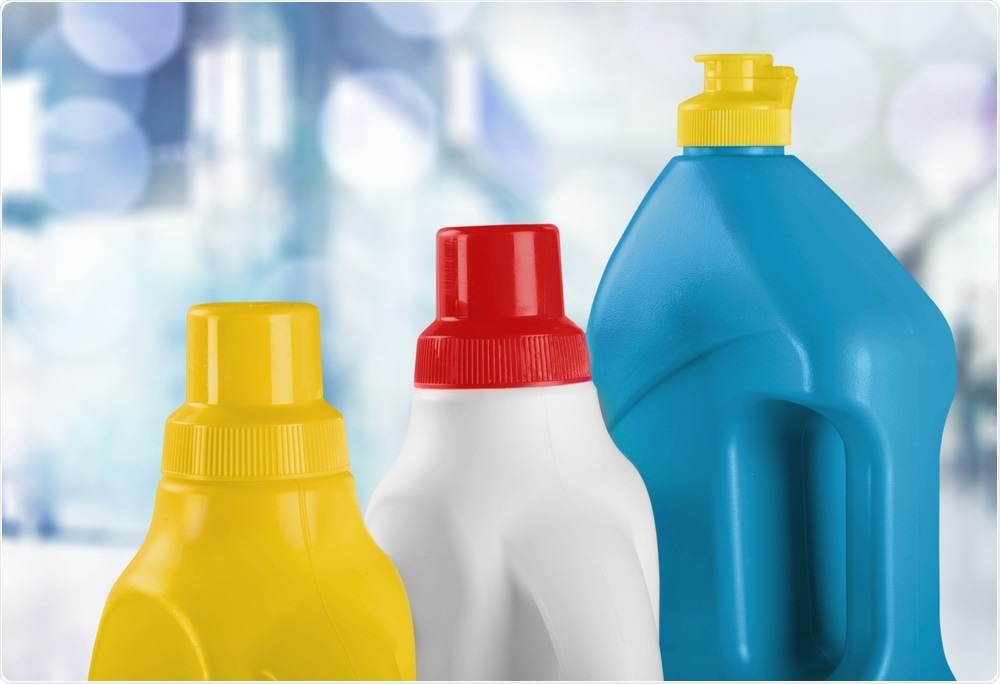Chlorine bleach is a common disinfectant product with widespread use in household cleaning. While the risks from ingesting chlorine bleach are clear, less obvious risks concerning potentially harmful airborne particles emanating from the bleach have been identified by researchers from the University of Toronto and Bucknell University in Pennsylvania, US, in a report published in American Chemical Society’s journal Environmental Science and Technology.
 Billion Photos | Shutterstock
Billion Photos | Shutterstock
Compounds containing chlorine are released from bleach cleaning products, including hypochlorous acid (HOCl) and chlorine gas (Cl2). In poorly ventilated environments, these compounds can reach notable levels, to the possible detriment of human and animal health.
HOCl and Cl2 are able to react with other chemicals readily found throughout homes, and the study focuses in particular on limonene, a chemical found in citrus fruit peels.
Limonene, which has an orange or lemon scent, is used in cosmetic and personal care products, cleaners, air fresheners, and even as flavoring, but it has been found to react with other compounds to form secondary organic aerosols (SOAs), which have been associated with respiratory problems, among other health issues.
The formation of SOAs can arise from natural light through windows or artificial indoor lighting splitting the HOCl and Cl2 compound into hydroxyl radical and a chlorine atom.
A separate study looking into the cellular effects of SOAs found that exposing lung cells to the molecules reduced phagocytic activity, meaning cells were not ingesting harmful particles, bacteria, or dying cells as effectively.
Despite this, Chen Wang and colleagues write in their study t that the “impact of bleach emissions on indoor air quality has received little-to-no consideration.”
The researchers aimed to determine whether limonene and fumes from bleach could react in light and dark conditions to create secondary organic aerosols. Using concentrations normally found in indoor environments, the researchers put limonene, HOCl, and Cl2 into an environmental chamber and measured the products caused by reactions using mass spectrometry.
In dark conditions, limonene and HOCl/Cl2 reacted quickly to create a range of volatile compounds. In light conditions (including both fluorescent light and natural sunlight), the compounds reacted with hydroxyl radicals created by the light and chlorine atoms to produce secondary organic compounds.
The authors write:
In contrast to the outdoor atmosphere, where mixing ratios of HOCl and Cl2 tend to be low (10s-100s of ppt), indoor HOCl and Cl2 can reach high levels during cleaning activities (100s of ppb or higher).”
This poses a potential risk to those working in professions that require regular exposure to chlorine bleach cleaning products, although the exact health risks have not yet been fully identified.
“This is the first study of the oxidation of limonene with HOCl and Cl2, and it illustrates the potential for particle formation to occur with indoor lighting during the use of common cleaning products,” the study states, also saying that the results from the study will “improve the understanding of the impact of bleach cleaners on indoor air quality.
Journal reference:
Wang, C., et al. (2019). Indoor Illumination of Terpenes and Bleach Emissions Leads to Particle Formation and Growth. Environ. Sci. Technol. https://doi.org/10.1021/acs.est.9b04261.